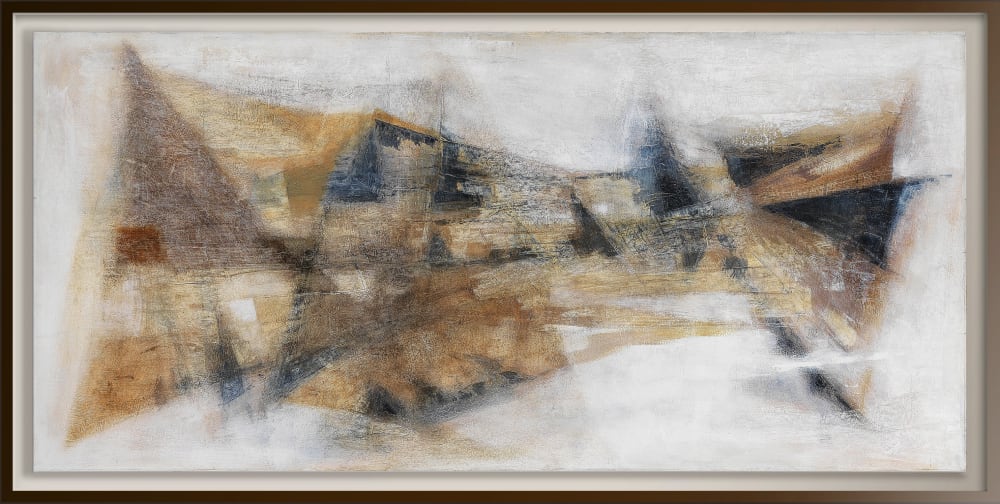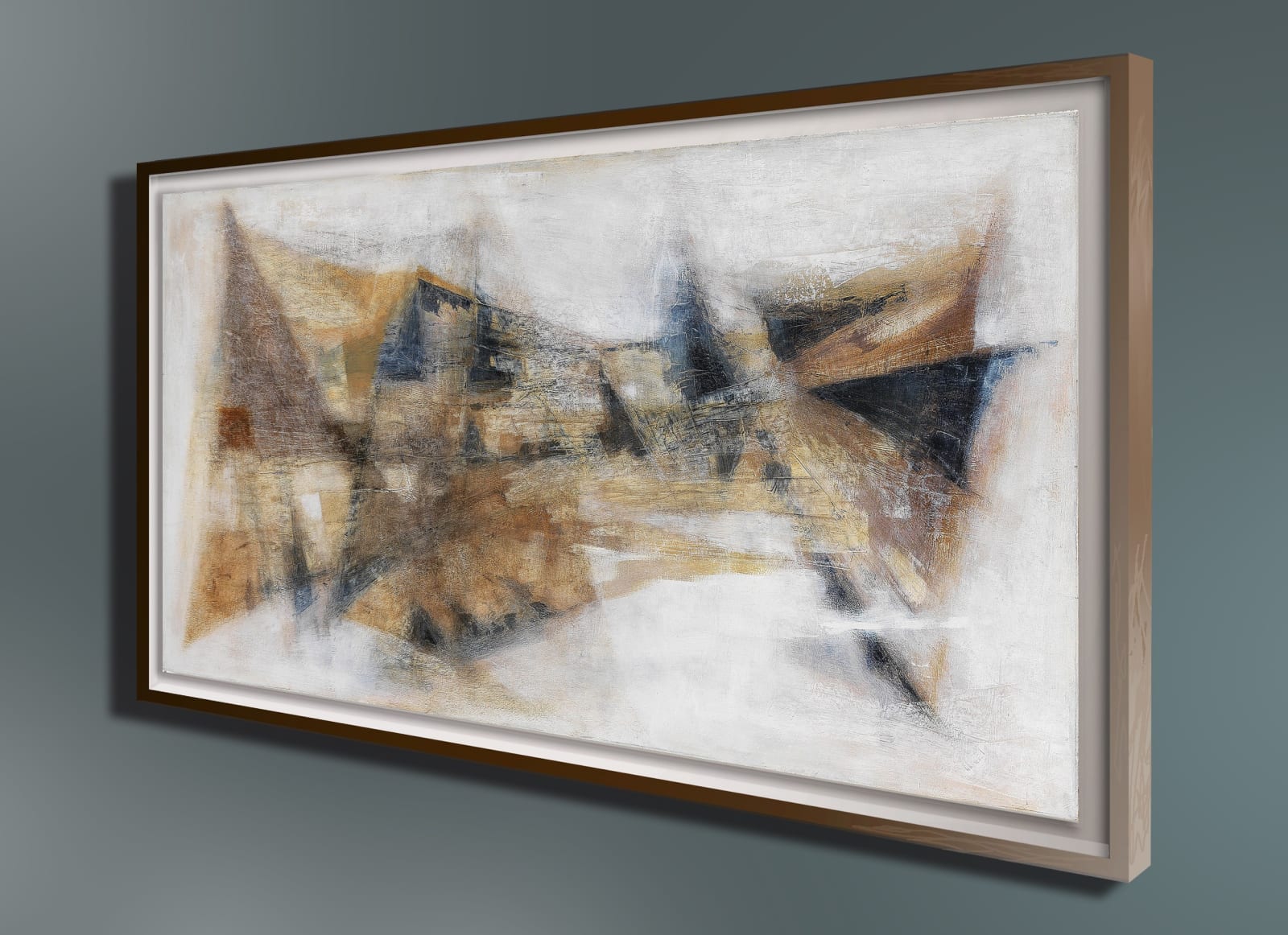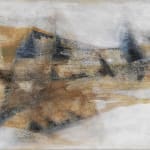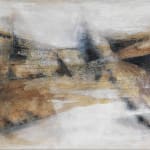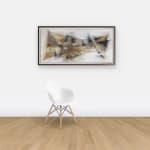
Landscape Elements (1960) by John Wells
John Wells 1907-2000
Framed: 68.8 x 137.5cm (27 x 54 1/8 ins.)
Further images
Provenance
Acquired from the artist by a European collector.
Sotheby's, London, 17 November 2004,lot 136.
Godson & Coles, London.
Private UK collection.
Exhibitions
Waddington Galleries, London, September 1960 (John Wells' first one-man London exhibition).
Tate Gallery St Ives. John Wells: The Fragile Cell, 2 May-1 November 1998, cat.no.41
Literature
Matthew Rowe, John Wells, Tate Gallery Publishing, St Ives, 1998, p.57, cat.no.41 (Colour Illustration. Full page)
As Matthew Rowe (former curator of the Tate Gallery, St Ives) writes of the painting in John Wells, the 1998 book which accompanied the Tate Gallery’s exhibition, “… he (Wells) was among the group of artists who attracted the attention of dealer Leslie Waddington, and he was offered his first London one-man show by Waddington Galleries in September 1960. Landscape Elements was produced during the frenetic run up to this exhibition and the looser, almost gestural technique reflects this.” The show sold out and Waddington's awarded Wells a second solo exhibition in 1964.
Rowe elaborates on the freer technique evident in Landscape Elements, “Slowly, towards the end of the 1950s, Wells loosened his style and executed a series of larger, more painterly works, for example Landscape Elements (1960) and Near and Far (1959 - now in the Jerwood public collection, London), which appear to reflect wider trends in British art. Many of his contemporaries in St Ives had taken inspiration and encouragement from the development of larger-scale gestural painting from the United States …”. Rowe further posits, “The catalyst for the new direction in his (Wells) work may have been his visit to Paris in 1959 with Patrick Heron, where he met the painter Pierre Soulages whose work combined a tight structure with broad, expressive paint strokes".
Wells’ technique of scraping back and palette of mineral colours associated with the Cornish landscape and subterranean heritage, is expertly articulated in Rowe’s narrative, “The method of scraping back the surface on the painting to reveal the first application of paint evokes a sense of an uncovering of the hidden structures of the landscape. The material qualities of the incisions produced by this scraping are combined with the saturated colours of mineral deposits to enhance the association with the Cornish Landscape".
Landscape Elements is a significant and important work that crowned a period in the John Well's career when he escaped a strict interest in geometrical, mathematical structures and produced freer, more gestural works that were no less an expression of the Cornish landscape that so possessed him.


